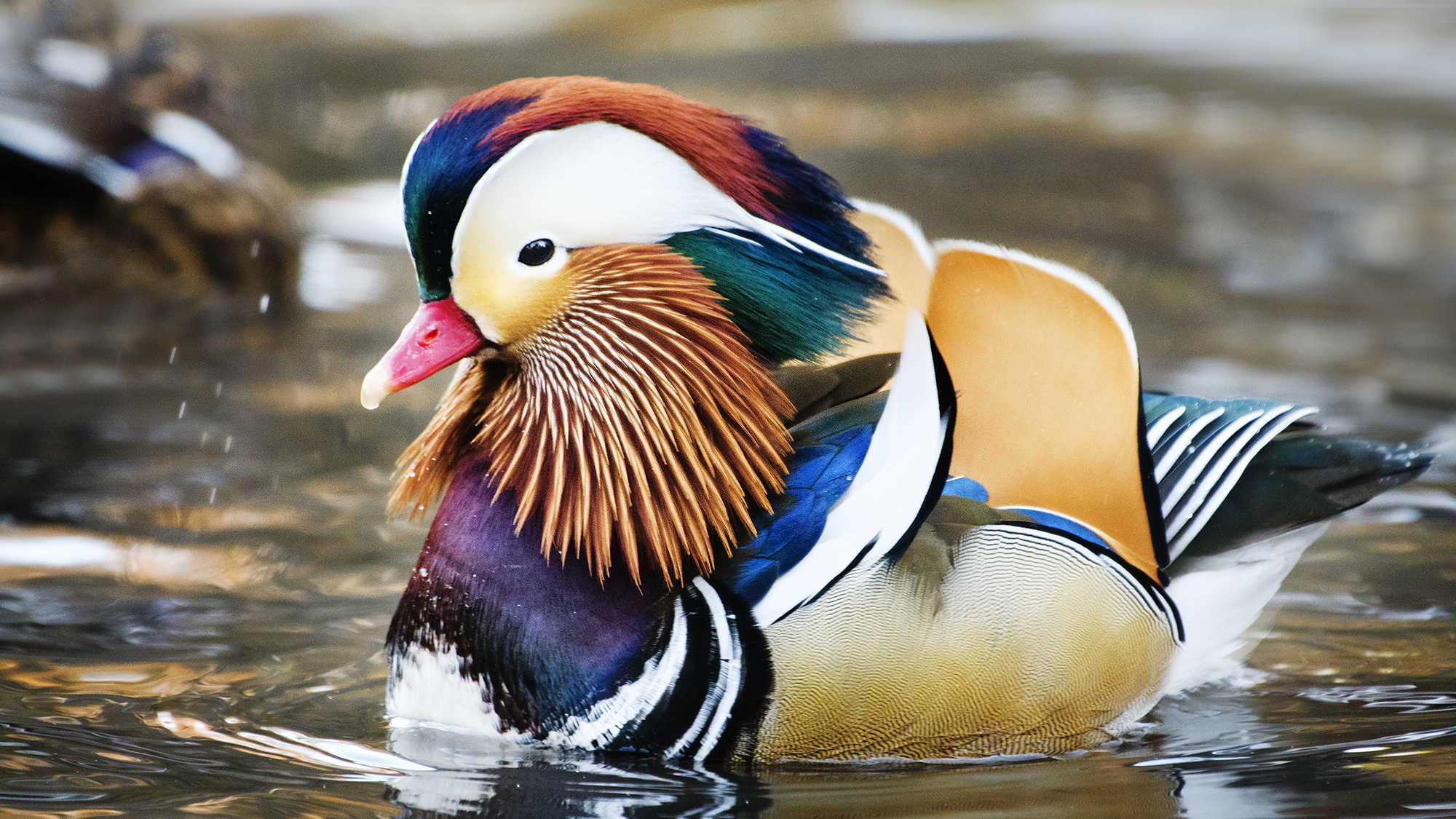There are thousands of species of birds living on Earth today–anywhere from around 10,000 to as many as 18,000, depending on how you define “species.” The fossil record suggests that almost all of this feathered, flying diversity emerged in the aftermath of the last major extinction 66 million years ago, when an asteroid rocked the planet and drove the non-avian dinosaurs extinct. Only a few birds–chicken, ostrich, and duck-like creatures–made it across the extinction line, giving rise to the dizzying array of modern birds: From songbirds to corvids to parrots.
Yet it’s been a long-standing biological mystery how that rapid evolution unfolded. New research sheds light on this proliferation of birds. Scientists report patterns of DNA change across the bird tree of life associated with the sudden, fiery end of the Cretaceous period, in a study published July 31 in the journal Science Advances. It’s the first published evidence to date of major shifts in avian genomes directly resulting from the extinction event, according to lead study author Jacob Berv, an evolutionary biologist at the University of Michigan.
[ Related: We were very wrong about birds ]
“We’re using new statistical models to detect this particular kind of pattern in the sequences that we haven’t been able to detect before,” Berv tells Popular Science. “It’s allowing us to associate major changes in bird genomes to this mass extinction event in a direct and very clear way, that we haven’t previously been able to do,” he adds. And these genetic signatures aren’t random, per the research. The observed DNA shifts are associated with changes in body size and parental care that may have been key to birds’ success and diversification, according to a secondary analysis by Berv and his colleagues.
The extinction marking the end of the Cretaceous and beginning of the Paleogene period has left obvious signs behind. For one, there’s the 6.2 mile-wide Chicxulub crater in Mexico. Then there’s the K-Pg boundary in the geologic record, a distinct layer of iridium-rich rock. Of course, there’s also the conspicuous absence of Tyrannosaurus rex wandering around. (Don’t be too sad for the dinosaurs though, birds–after all–are dinos). Now researchers have uncovered one more piece to the puzzle of how influential a single, big asteroid has been for Earth.
“I think in general, we’ve underestimated the extent to which these extinction events shape modern diversity,” says Nick Longrich, a paleontologist and evolutionary biologist at the University of Bath in England. Longrich wasn’t involved in the Berv’s research, but has previously studied the birds that didn’t make it across the Cretaceous-Paleogene line. “We tend to focus on everyday, little mutations–what we call micro evolution–but you’ll look back over huge spans of time and see that these very extreme, rare events have been massively important in driving the evolution of life on Earth.” With the new study, “what’s interesting is we can detect it,” he adds.
The scientists used a computer model to analyze partial genome samples from 198 modern bird species, spanning across the whole avian clade, collected from museum specimens. Combined with information from the fossil record about the timing of certain lineage’s emergence, Berv and his colleagues were able to reconstruct a history of evolutionary transitions and uncover “genomic fossils.”
Similar past analyses have tended to use models built around assumptions like that the ratio of A’s, T’s, G’s, and G’s is relatively stable throughout evolution, and substitutions only occur randomly. In reality though, T’s are much more likely to change to C’s, than to A’s, says Sonal Singhal, a study co-author and an evolutionary geneticist at California State University, Dominguez Hills. The new study deployed a different approach, she notes, using a model that didn’t include these standard assumptions, and instead accounted for the most likely changes in DNA composition.
With this improved model, they identified 17 different, major shifts in molecular composition in their dataset. Fifteen were clustered within 5 million years of the K-Pg extinction, and 12 were directly linked to divergences between avian lineages. “It’s very, very clear that these major changes in [DNA] composition are happening in a very short interval,” says Berv.
From there, the scientist used a machine learning model to link those observed genome shifts with traits. They found that body size and parental care were strongly impacted by those DNA changes. Across the taxa the researchers examined, they found that birds became smaller after the mass-extinction-linked genetic shifts and that hatchlings became less mature at emergence and more reliant on parental care. Clutch size and granivory, or seed-eating, were also significantly linked with the observed DNA changes.
Life immediately following a massive asteroid impact is hard. One day “you’re used to nice, sunny Cretaceous days with beautiful forest and plentiful food, and then all of a sudden you’re in this blasted hellscape,” says Daniel Ksepka, a paleontologist and curator at the Bruce Museum in Connecticut. Kspeka was uninvolved in the new research, but has previously studied bird diversification. “It makes a lot of sense,” that the study would identify such trait changes as linked with the extinction event, he tells Popular Science, noting that size and parental care were likely important traits to manage a suddenly, much harsher reality. Smaller birds require less food and fuel, and can survive on less. And previous research has indicated less mature hatchlings counterintuitively develop and grow faster, which also may have been key to boosting reproductive success over generations.
An increase in seed-eating is a particularly interesting find, Ksepka says. Many plants died or were unable to grow as ash blocked out sunlight at the end of the Cretaceous. But seeds would have remained as a potential food source for at least a few years. The rise of granivory in the genetic data supports existing theories that beaked birds survived and diversified because of their ability to take advantage of a resource that others couldn’t.
It’s long been understood that mass extinctions create mass opportunities for new organisms to evolve and take over unfilled ecological niches. A world without an asteroid impact 66 million years ago, would likely be a world with far fewer mammals, for instance. But what’s often less discussed is how the remnants of extinction opportunity can become ingrained and fundamentally dictate the course of what’s to follow for millions and millions more years. “The evolutionary trajectories of the major bird groups were encoded and remain fixed since that point in time,” says Berv–his study demonstrates that.
[ Related: All living birds share an ‘iridescent’ ancestor ]
Yet there are some questions the new research doesn’t resolve. Because they relied on partial– not complete–genomes, Berv notes the study doesn’t identify every major genetic change that likely occurred as a result of the Chicxulub impactor. He’d like to go back and conduct a similar analysis at the full genome level, but he doesn’t currently have access to the computing power he’d need to do so.
And there is a margin of error built into genetic modeling studies. The fossil record is incomplete, and analyzing contemporary genetic data through the lens of what happened 66 million years ago comes with lots of uncertainty, as exemplified by paradigm shifting recent discoveries. “These models and attempts to reconstruct things. They’re not God’s truth,” says Longrich. Though he finds the study a compelling initial attempt at using this new method and presenting a hypothesis for how avian evolution may have occurred at the K-Pg boundary, he’s not fully convinced it’s the final word. Science is an ongoing, fluid process. And one study doesn’t cement a hypothesis as fact, notes Longrich. “I would not bet my life that this phylogeny is correct. But I would bet you a beer it is–it’s like that level of confidence,” he says. “There are fossils out there in the Cretaceous that we are still trying to classify. But it’s a really interesting first step.”
As more steps follow, we’ll get an even deeper view into the faraway past and how it’s still reverberating in the present. One day, it may help us decode what’s to come. “Understanding how the evolution of life has been linked to major changes in Earth’s history is a fundamental question in biology,” says Berv. Some research indicates that a new, human-caused mass extinction is already underway, and bird evolution could offer us a roadmap to prepare for the aftermath. “If we want to know how life will respond to current and future events–something massive like climate change–the only resource we have to rely on is history.”














/https://tf-cmsv2-smithsonianmag-media.s3.amazonaws.com/filer_public/d1/82/d18228f6-d319-4525-bb18-78b829f0791f/mammalevolution_web.jpg)






Discussion about this post